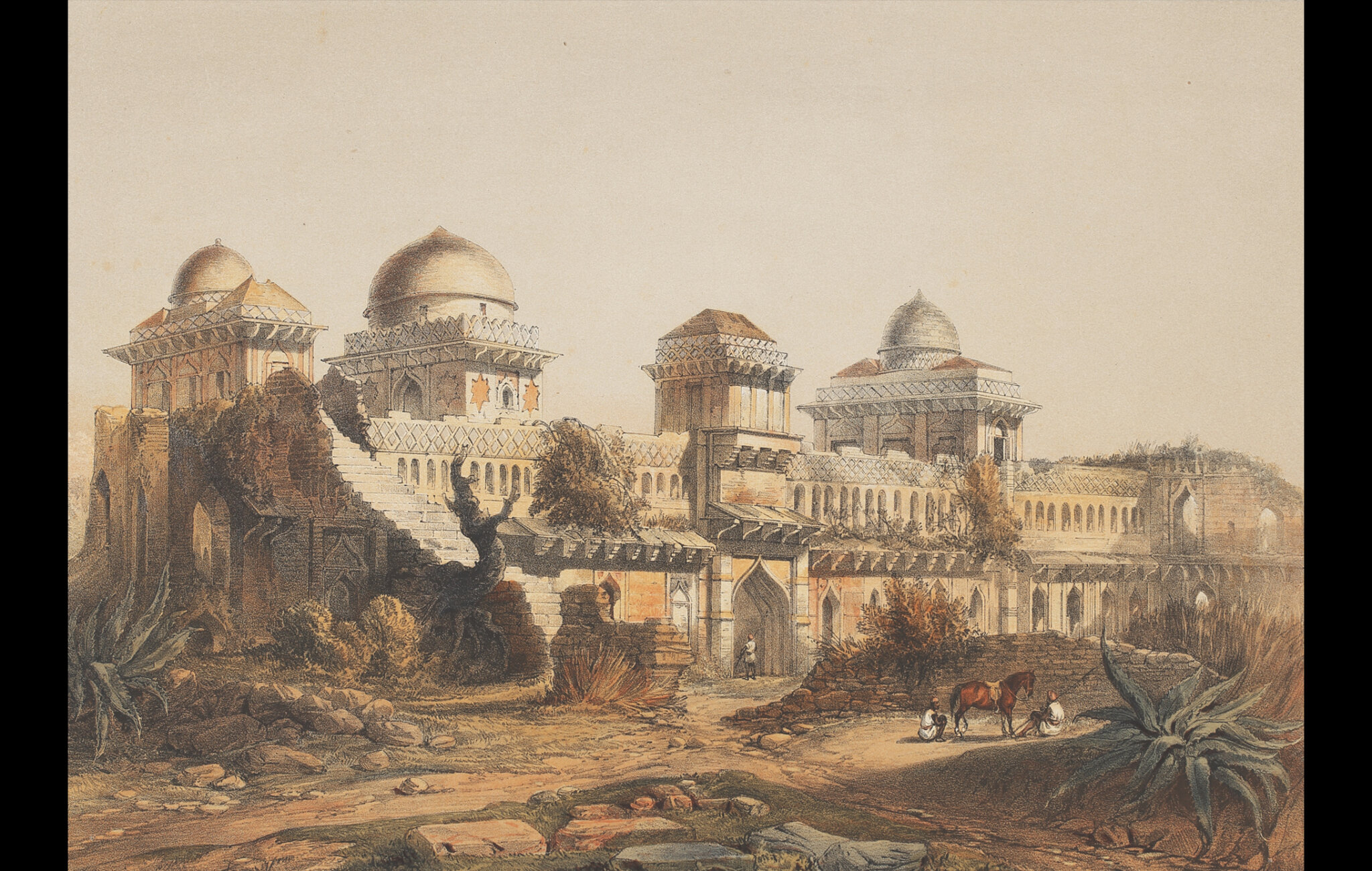
This engraving from the book The Ruins of Mandoo: The Ancient Mahommedan Capital of Malwah in Central India, 1859 illustrates features of Mandu in western Madhya Pradesh, an ancient city of historical and architectural significance.
The beautiful fortress town can be dated back to the 6th century, since when it has continually been the site of many conquests and civilisations, including those of the Paramara Dynasty, the Delhi Sultanate and the Mughals. These empires left behind examples of spectacular architecture such as Jami Mosque (Jumah Musjid), Jahaz Mahal, the palace of Baz Bahadur along with a pavilion he built for his beloved queen Roopmati, the tomb of Hoshang Shah Ghuri (Sultan Hoossain Shah Ghuree) and many more.
The Jahaz Mahal or the ‘Water Palace’ is called so because it was built by Ghiyath Shah (r. 1469-1500) between two reservoirs – the Kapur talao and Munja talao. It also served as the palace for Sultan’s harem.
Title
The Jahaz Mahal, ManduPeriod
1859Artist
Captain Claudius HarrisEngraver
J Guiaud based on sketches by Captain Claudius HarrisPublisher
Day and Son, LondonMedium
Coloured lithographDimensions
H: 27.5 x W: 37.5 cmAccession No.
2020.1.1 (2)Genre: Etchings & Engravings
